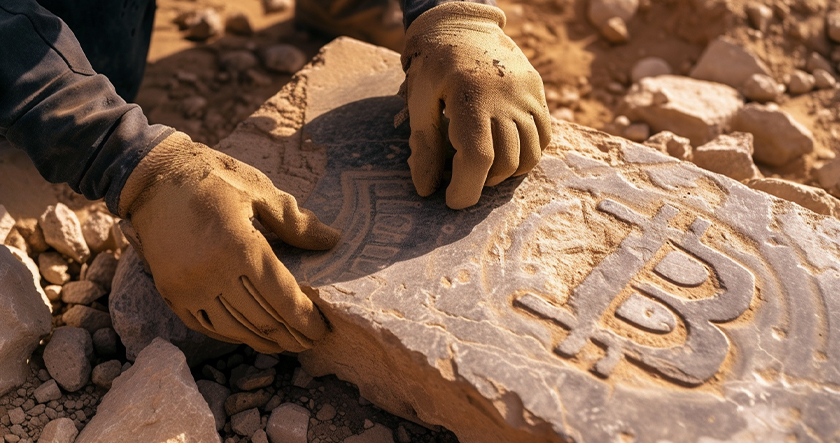
In the world of cryptocurrency, coins are generally divided into two categories: Proof of Stake (PoS) coins that rely on a staking system and Proof of Work (PoW) coins that rely on blockchain mining. But what exactly is crypto staking, and how does it compare to crypto mining – and what advantage does either system have over the other?
Because cryptocurrencies rely on a shared, public ledger, they need a way to validate transactions on the ledger. The two main approaches to solving this problem are represented by Mining or Staking. Bitcoin is the prime example of a PoW system, and many cryptocurrencies followed in Bitcoin’s footsteps. However, some new blockchains went the PoS route, with the most popular of those being Ethereum. Though there are several cryptocurrencies using each system, we’ll look into Ethereum and Bitcoin specifically as examples of their respective validation systems.
How to Stake Ethereum
To take part in Ethereum staking, participants agree to set apart some of their own ether in a smart contract as collateral for Ethereum-based transactions. By doing so, they’re acting as validators to help ensure an uninterrupted flow of ether.
Along with verifying transactions, validators with 32 ether in their node are chosen at random by the network to add to the blockchain. Staking participants can either go in to create their own solo node (if they have 32 ether on their own) or join a staking pool to create a node with a total of 32 ether.
What’s the benefit of staking, you may ask? For offering their services to Ethereum’s network, validators receive ether as well as a percentage of network fees. Solana and Cardano are a couple other popular PoS cryptocurrencies.
In the sense that it generates passive income, staking is similar to blockchain mining – but there are far more differences than similarities between the two methods. Their goals and outcomes are largely the same, but the way they get there is what makes the difference. To illustrate the point, let’s move on to Bitcoin, being the largest cryptocurrency coin to use a PoW system.
Mining Blocks with Bitcoin
Over on Bitcoin’s side of the room, it’s all about mining. To help build the blockchain and validate transactions in Bitcoin’s network, participants must mine – which in this case means they assign dedicated hardware to solving mathematical computations.
The goal for each miner is to come closest to the target hash, or the solution to the problem that they’re assigned en masse. The fastest miner to solve for the target hash will mine the block for verification – thereby adding it to the blockchain – and summarily receive a reward in the form of bitcoin. In other words, they’ve put in the work, and so the “Proof of Work” concept is supported and the network continues to function. (This is where the “crypto” in cryptocurrency comes from. The target hash is a code that is so long and complicated, only several computers working together can solve them. Cryptography is the practice and study of creating and solving codes.)
Litecoin and Dogecoin are examples of other PoW cryptocurrencies.
Which System Works Best?
Both PoS and PoW systems have their benefits and their disadvantages, and they haven’t gone unnoticed by the major coins and their supporters. In fact, Ethereum started as a PoW coin, but transitioned to a PoS coin in 2022.
Let’s start with mining and its downsides. Bitcoin mining has generated some controversy in recent years due to the excessive toll it places on resources. Mining machines have to be left on 24/7, and since they produce a lot of heat due to the complex computations they’re performing, they have to be constantly cooled. It’s the reason why Bitcoin mining consumes more energy than many countries.
Apart from having a high energy consumption, mining also requires participants to compete against one another to find the target hash first – meaning having increasingly faster hardware capabilities is a necessity for miners.
The computational hardware involved in Bitcoin mining also lends to one of the strengths of the PoW system, however – its security. For a fraudulent transaction to make it through the block verification process, the fraudulent actor would need to have more than 50% of the network’s computational power under their control, which isn’t an easy task for anyone.
The more hardware mining Bitcoin, in other words, the more security the network has.
By contrast, PoS systems are deliberately distanced from having hardware requirements. That’s not to say that Ethereum staking doesn’t require some hardware to function, as participants still must have their hardware online and functional during the staking process. However, since it relies on a nomination system to validate blocks (rather than a competition system), it uses significantly less resources.
The biggest drawback to the PoS system is that validators who place a larger amount of ether up for stake are more likely to be chosen to validate additional blocks – meaning big fish get bigger, and the network starts getting dangerously close to centralization.
Additionally, staking Ethereum requires validators to lock up their ether for a period of time. Since they aren’t able to access it or spend it while it’s staked, validators have less market liquidity. At a large scale, that can serve to reduce the amount of ether on the market at any given time.
Which system is better? There’s no clean cut answer. Mining, while energy intensive, makes the network inarguably more secure. Staking requires less resources, but risks centralization and reduces liquidity.
By the numbers, 146 cryptocurrency coins use a PoW system, while 133 use a PoS system (of those listed on CryptoSlate in 2024). That alone indicates that both methods are viable and fulfill their purpose of stabilizing their respective blockchains.
